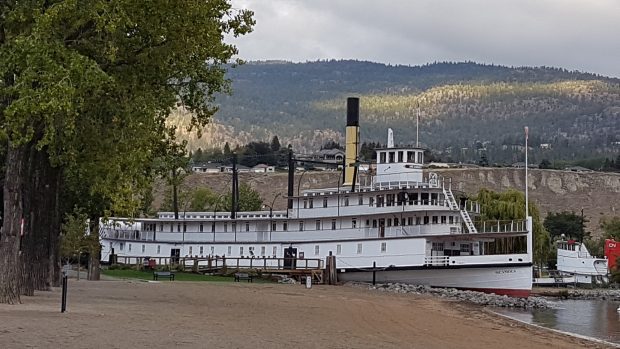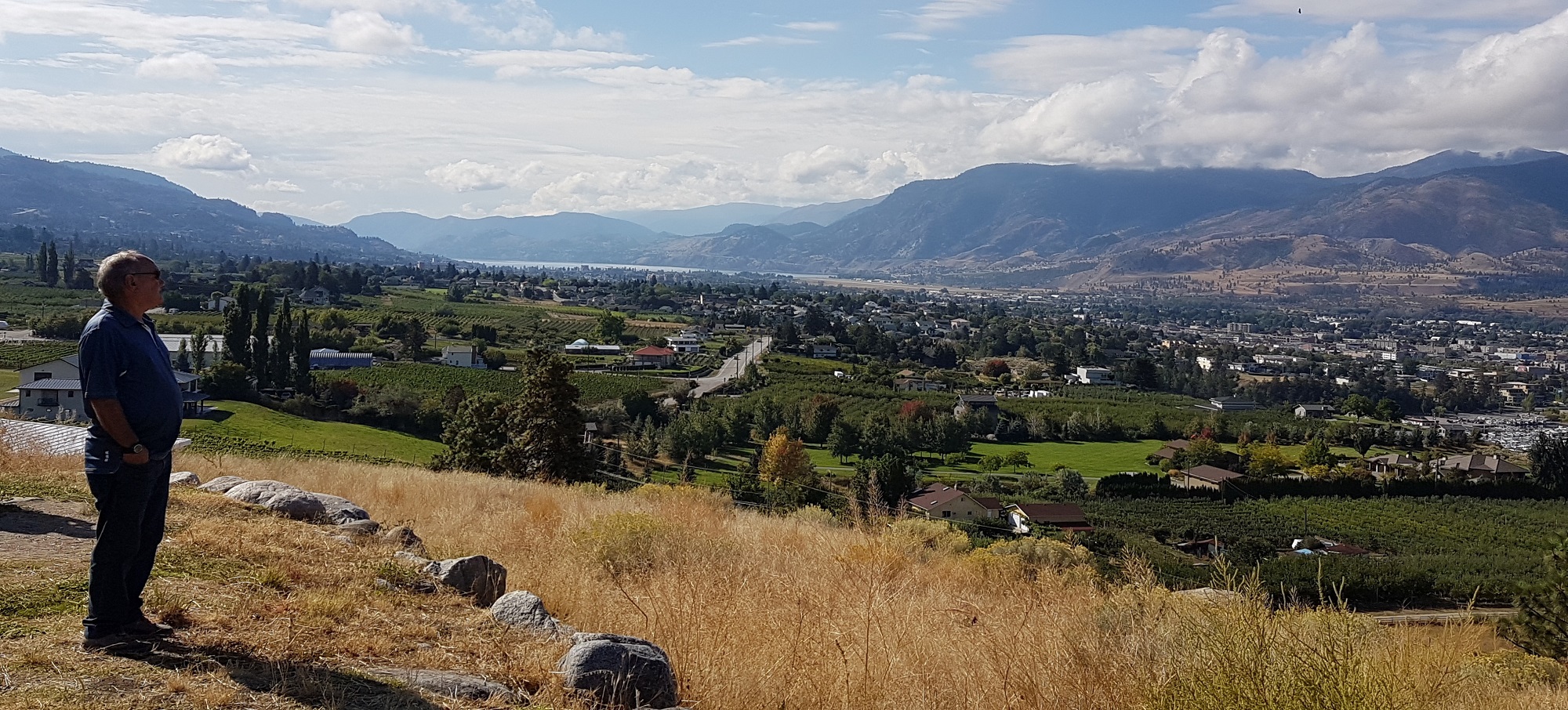Penticton
Penticton
A popular destination in the Okanagan Valley, situated between Skaha Lake and Okanagan Lake, Penticton is surrounded by scores of vineyards that produce award-winning wines and offer world-renowned chef-inspired menus and tastings. The drive north from Penticton to Naramata along Lake Okanagan offers breathtaking scenery of the vines as they stretch down to the lakeshore below. Beaches, swimming, tubing, the Kettle Valley Rail Trail, rock climbing on Skaha Bluffs, golfing and so much more bring visitors here year after year.

S.S. Sicamous, Penticton | P. Cashin
Location
Penticton is located in the Thompson Okanagan region 63 km (39 mi) north of Osoyoos and 72 km (45 mi) south of Kelowna on Hwy 97.
A Step Back in Time
Pen-tic-ton, as translated by the local Salish Native Americans, means “a place to live forever” (the commonly accepted translation) or “a place to live year-round”.
Tom Ellis, the first non-Native settler in the area, took the meaning to heart and settled here in 1865. Ellis, from England, planned the formulation of the new town. In 1892, a townsite was laid out which is now called Front Street, home to many unique stores and boutiques.
A strange little known fact was that some of the older, wooden buildings were built on skids and could be moved to a new location by simply hitching them up to a team of horses and dragging them away.
By 1907, Penticton had grown to 600 residents, and was officially recognized by the British Columbia Government as a municipal district. In the teens, the building of the Kettle Valley Railroad increased the population to around 1,500 people. By 1921 the city was 4,000 strong, but it took until 1948 for Penticton to gain City Status.
The early days were difficult for road travel, but with the proliferation of the automobile and the constant increase in population, road-building was in full force by the 1920s. Prior to this, travel was done primarily by water, up and down the Okanagan Lake, which runs from Vernon in the north to its southern tip at Penticton. Much of this travel was aboard the S.S. Sicamous. Although not the first stern-wheeler to grace Okanagan Lake (but probably the most famous), the S.S. Sicamous was known as the Queen of the Lake. She was built in Port Harbor in Ontario and assembled in Okanagan Landing for her maiden voyage on July 1st (Canada’s birthday) in 1914. Many of the servicemen heading for WWI began their journey aboard the S.S Sicamous. Demoted to carrying freight in 1935, she was then retired two years later. Penticton purchased her from Canadian Pacific Railway (CPR) in 1949 for $1 and she has since been restored and open to visitors today.
Many changes have come to Penticton. The city now has a population of over 33,000 and continues to grow. And, if you listen on a quiet night, you can almost hear the horn of one of the old sternwheelers, announcing its arrival on the beach.
Penticton and Nearby Accommodations
British Columbia Lodging and Campgrounds Association Members
List
Map
10 Listings












